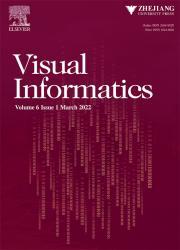STEP-LINK: STEP-by-Step Tutorial Editing with Programmable LINKages
IF 3.8
3区 计算机科学
Q2 COMPUTER SCIENCE, INFORMATION SYSTEMS
引用次数: 0
Abstract
Programming tutorials serve a crucial role in teaching coding and programming techniques. Creating high-quality programming tutorials remains a laborious task. Authors devote effort to writing step-by-step solutions, creating examples, and editing existing tutorials. We explore the potential of using the text-code connection to improve the authoring experience of programming tutorials. We proposed a mixed-initiative approach to infer, establish, and maintain the latent text-code connections. With a series of interactions, the STEP-LINK (STEP-by-Step Tutorial Editing with Programmable LINKages) prototype leverages text-code connections to assist users in authoring tutorials. The results of our experiment demonstrate the effectiveness of our system in supporting users in the authoring of step-by-step code explanations, the creation of examples, and the iteration of tutorials.
STEP-LINK:一步一步的教程编辑与可编程的联系
编程教程在教授编码和编程技术方面起着至关重要的作用。创建高质量的编程教程仍然是一项艰巨的任务。作者致力于编写一步一步的解决方案,创建示例和编辑现有教程。我们探索了使用文本-代码连接来改善编程教程的创作体验的潜力。我们提出了一种混合主动的方法来推断、建立和维护潜在的文本-代码连接。通过一系列的交互,STEP-LINK(使用可编程链接的分步教程编辑)原型利用文本-代码连接来帮助用户编写教程。我们的实验结果证明了我们的系统在支持用户编写分步代码解释、创建示例和迭代教程方面的有效性。
本文章由计算机程序翻译,如有差异,请以英文原文为准。
求助全文
约1分钟内获得全文
求助全文
来源期刊

Visual Informatics
Computer Science-Computer Graphics and Computer-Aided Design
CiteScore
6.70
自引率
3.30%
发文量
33
审稿时长
79 days
 求助内容:
求助内容: 应助结果提醒方式:
应助结果提醒方式:


